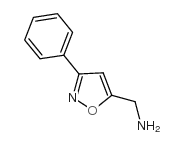932-90-1
| 中文名 | 苯甲醛肟 |
|---|---|
| 英文名 | Benzaldoxime, predominantly (E)-isomer |
| 中文别名 |
苯亚甲基醛 肟,PREDOMINANTLY (E)-ISOMER
逆亞苄肟 |
| 英文别名 |
Benzaldoxime
MFCD00002119 EINECS 213-261-2 |
| 密度 | 1,11 g/cm3 |
|---|---|
| 沸点 | 118-120°C 10mm |
| 熔点 | 30-33 °C |
| 分子式 | C7H7NO |
| 分子量 | 121.13700 |
| 闪点 | 108°C |
| 精确质量 | 121.05300 |
| PSA | 32.59000 |
| LogP | 1.49470 |
| 外观性状 | 在熔点后,透明无色晶体 |
| 折射率 | 1.59-1.592 |
| 储存条件 | 保持容器密封,储存在阴凉,干燥的地方 |
| 稳定性 | 常温常压下稳定,避免氧化物 碱 酸性氯化物 酸酐接触 |
| 水溶解性 | methanol: 0.1 g/mL, clear |
| 分子结构 | 1、 摩尔折射率:36.15 2、 摩尔体积(m3/mol):118.4 3、 等张比容(90.2K):295.2 4、 表面张力(dyne/cm):38.6 5、 极化率(10 -24cm 3):14.33 |
| 计算化学 | 1.疏水参数计算参考值(XlogP):无 2.氢键供体数量:1 3.氢键受体数量:2 4.可旋转化学键数量:1 5.互变异构体数量:2 6.拓扑分子极性表面积32.6 7.重原子数量:9 8.表面电荷:0 9.复杂度:95.1 10.同位素原子数量:0 11.确定原子立构中心数量:0 12.不确定原子立构中心数量:0 13.确定化学键立构中心数量:1 14.不确定化学键立构中心数量:0 15.共价键单元数量:1 |
| 更多 | 1. 性状:未确定 2. 密度(g/mL,25/4℃):1,11 g/cm3 3. 相对蒸汽密度(g/mL,空气=1):未确定 4. 熔点(ºC):30-33°C 5. 沸点(ºC,常压):未确定 6. 沸点(ºC ,10mmHg):118-120°C 7. 折射率:1.59-1.592 8. 闪点(ºC):108°C 9. 比旋光度(º):未确定 10. 自燃点或引燃温度(ºC):未确定 11. 蒸气压(kPa,25ºC):未确定 12. 饱和蒸气压(kPa,60ºC):未确定 13. 燃烧热(KJ/mol):未确定 14. 临界温度(ºC):未确定 15. 临界压力(KPa):未确定 16. 油水(辛醇/水)分配系数的对数值:未确定 17. 爆炸上限(%,V/V):未确定 18. 爆炸下限(%,V/V):未确定 19. 溶解性:未确定 |
Synonym:None Section 2 - COMPOSITION, INFORMATION ON INGREDIENTS
Risk Phrases: 36/37/38 Section 3 - HAZARDS IDENTIFICATION EMERGENCY OVERVIEW
Irritating to eyes, respiratory system and skin. Potential Health Effects Eye: Causes eye irritation. May cause chemical conjunctivitis. Skin: Causes skin irritation. Ingestion: May cause gastrointestinal irritation with nausea, vomiting and diarrhea. Inhalation: Causes respiratory tract irritation. Can produce delayed pulmonary edema. Chronic: Effects may be delayed. Prolonged contact may cause severe irritation or burns. Section 4 - FIRST AID MEASURES Eyes: Flush eyes with plenty of water for at least 15 minutes, occasionally lifting the upper and lower eyelids. Get medical aid immediately. Skin: Get medical aid. Flush skin with plenty of water for at least 15 minutes while removing contaminated clothing and shoes. Wash clothing before reuse. Ingestion: Never give anything by mouth to an unconscious person. Get medical aid. Do NOT induce vomiting. If conscious and alert, rinse mouth and drink 2-4 cupfuls of milk or water. Inhalation: Remove from exposure and move to fresh air immediately. If not breathing, give artificial respiration. If breathing is difficult, give oxygen. Get medical aid. Notes to Physician: Treat symptomatically and supportively. Section 5 - FIRE FIGHTING MEASURES General Information: As in any fire, wear a self-contained breathing apparatus in pressure-demand, MSHA/NIOSH (approved or equivalent), and full protective gear. During a fire, irritating and highly toxic gases may be generated by thermal decomposition or combustion. Extinguishing Media: Use agent most appropriate to extinguish fire. Use water spray, dry chemical, carbon dioxide, or appropriate foam. Section 6 - ACCIDENTAL RELEASE MEASURES General Information: Use proper personal protective equipment as indicated in Section 8. Spills/Leaks: Clean up spills immediately, observing precautions in the Protective Equipment section. Sweep up or absorb material, then place into a suitable clean, dry, closed container for disposal. Provide ventilation. Section 7 - HANDLING and STORAGE Handling: Wash thoroughly after handling. Remove contaminated clothing and wash before reuse. Avoid contact with eyes, skin, and clothing. Keep container tightly closed. Avoid ingestion and inhalation. Use with adequate ventilation. Wash clothing before reuse. Storage: Keep container closed when not in use. Store in a tightly closed container. Store in a cool, dry, well-ventilated area away from incompatible substances. Section 8 - EXPOSURE CONTROLS, PERSONAL PROTECTION Engineering Controls: Facilities storing or utilizing this material should be equipped with an eyewash facility and a safety shower. Use process enclosure, local exhaust ventilation, or other engineering controls to control airborne levels. Exposure Limits CAS# 932-90-1: Personal Protective Equipment Eyes: Wear appropriate protective eyeglasses or chemical safety goggles as described by OSHA's eye and face protection regulations in 29 CFR 1910.133 or European Standard EN166. Skin: Wear appropriate protective gloves to prevent skin exposure. Clothing: Wear appropriate protective clothing to prevent skin exposure. Respirators: A respiratory protection program that meets OSHA's 29 CFR 1910.134 and ANSI Z88.2 requirements or European Standard EN 149 must be followed whenever workplace conditions warrant respirator use. Section 9 - PHYSICAL AND CHEMICAL PROPERTIES Physical State: Crystals Color: after melting, clear colorless Odor: Not available. pH: Not available. Vapor Pressure: Not available. Viscosity: Not available. Boiling Point: Not available. Freezing/Melting Point: 30.00 - 33.00 deg C Autoignition Temperature: Not available. Flash Point: 108 deg C ( 226.40 deg F) Explosion Limits, lower: Not available. Explosion Limits, upper: Not available. Decomposition Temperature: Solubility in water: Specific Gravity/Density: Molecular Formula: C7H7NO Molecular Weight: 121.14 Section 10 - STABILITY AND REACTIVITY Chemical Stability: Stable at room temperature in closed containers under normal storage and handling conditions. Conditions to Avoid: Incompatible materials, excess heat, strong oxidants. Incompatibilities with Other Materials: Strong oxidizing agents, strong bases, acid anhydrides, acid chlorides. Hazardous Decomposition Products: Carbon monoxide, oxides of nitrogen, irritating and toxic fumes and gases, carbon dioxide. Hazardous Polymerization: Has not been reported Section 11 - TOXICOLOGICAL INFORMATION RTECS#: CAS# 932-90-1 unlisted. LD50/LC50: Not available. Carcinogenicity: Benzaldehyde oxime - Not listed by ACGIH, IARC, or NTP. Section 12 - ECOLOGICAL INFORMATION Other No information available. Section 13 - DISPOSAL CONSIDERATIONS Dispose of in a manner consistent with federal, state, and local regulations. Section 14 - TRANSPORT INFORMATION IATA Not regulated as a hazardous material. IMO Not regulated as a hazardous material. RID/ADR Not regulated as a hazardous material. Section 15 - REGULATORY INFORMATION European/International Regulations European Labeling in Accordance with EC Directives Hazard Symbols: XI Risk Phrases: R 36/37/38 Irritating to eyes, respiratory system and skin. Safety Phrases: S 24/25 Avoid contact with skin and eyes. WGK (Water Danger/Protection) CAS# 932-90-1: No information available. Canada CAS# 932-90-1 is listed on Canada's NDSL List. CAS# 932-90-1 is not listed on Canada's Ingredient Disclosure List. US FEDERAL TSCA CAS# 932-90-1 is listed on the TSCA inventory. SECTION 16 - ADDITIONAL INFORMATION N/A |
|
生态学数据: 对水是稍微有害的,不要让未稀释或大量的产品接触地下水,水道或者污水系统,若无政府许可,勿将材料排入周围环境
|
| 危害码 (欧洲) | Xi:Irritant; |
|---|---|
| 风险声明 (欧洲) | R36/37/38 |
| 安全声明 (欧洲) | S26-S36-S24/25 |
| WGK德国 | 3 |
| 海关编码 | 29280090 |
| 上游产品 8 | |
|---|---|
| 下游产品 10 | |
| 海关编码 | 2928000090 |
|---|---|
| 中文概述 | 2928000090 其他肼(联氨)及胲(羟胺)的有机衍生物。监管条件:无。增值税率:17.0%。退税率:9.0%。最惠国关税:6.5%。普通关税:20.0% |
| 申报要素 | 品名, 成分含量, 用途 |
| Summary | 2928000090 other organic derivatives of hydrazine or of hydroxylamine VAT:17.0% Tax rebate rate:9.0% Supervision conditions:none MFN tariff:6.5% General tariff:20.0% |



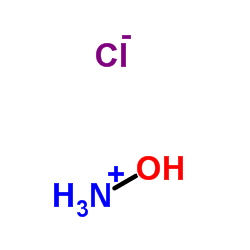
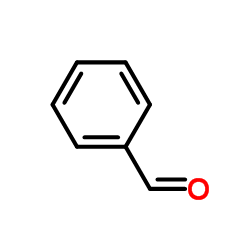
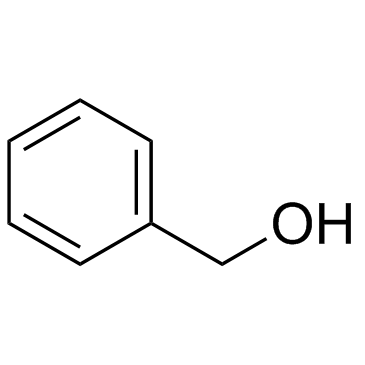


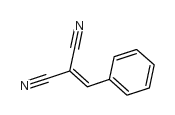

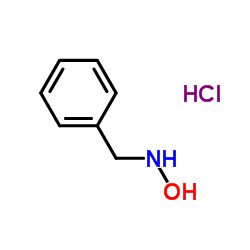
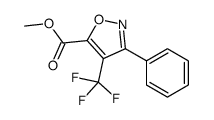

![[[chloro(phenyl)methylidene]amino] 2,2-dichloroacetate结构式](https://image.chemsrc.com/caspic/454/105755-38-2.png)
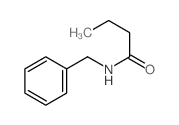
甲酮结构式](https://image.chemsrc.com/caspic/401/341001-38-5.png)



